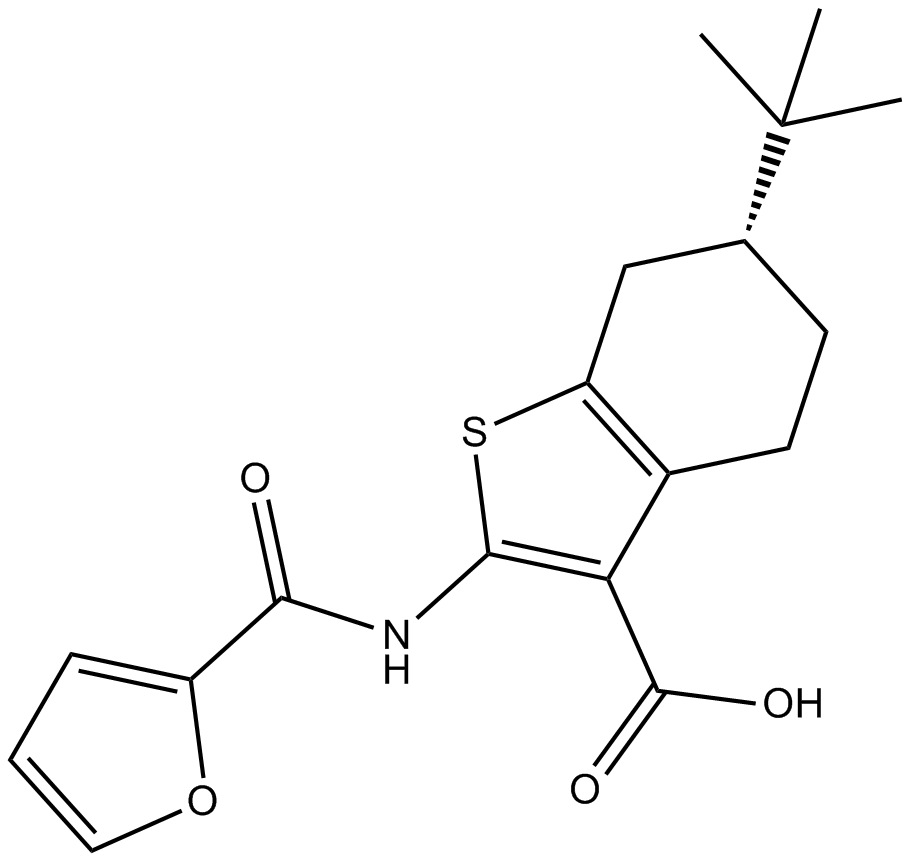CaCCinh-A01 (Synonyms: TMEM16 Blocker I) |
| Catalog No.GC14768 |
calcium-activated chloride channel (CaCC) inhibitor
Products are for research use only. Not for human use. We do not sell to patients.

Cas No.: 407587-33-1
Sample solution is provided at 25 µL, 10mM.
CaCCinh-A01 is an inhibitor of both TMEM16A and calcium-activated chloride channel (CaCC) with IC50s of 2.1 and 10 μM, respectively.
30 μM CaCCinh-A01 and 100 μM tannic acid strongly inhibit CaCC current following ATP stimulation[1]. Calcium-dependent chloride current is reduced by 38±14, 66±10, and 91±1% by 0.1, 1, and 10 μM CaCCinh-A01, respectively. ATP-induced short-circuit currents are reduced by 38±7 and 78±3% at 10 and 30 μM CaCCinh-A01, respectively[2].
References:
[1]. TMEM16A inhibitors reveal TMEM16A as a minor component of calcium-activated chloridechannel conductance in airway and intestinal epithelial cells. J Biol Chem. 2011 Jan 21;286(3):2365-74.
[2]. De La Fuente R, et al. Small-molecule screen identifies inhibitors of a human intestinal calcium-activated chloridechannel. Mol Pharmacol. 2008 Mar;73(3):758-68.
Average Rating: 5 (Based on Reviews and 7 reference(s) in Google Scholar.)
GLPBIO products are for RESEARCH USE ONLY. Please make sure your review or question is research based.
Required fields are marked with *




















